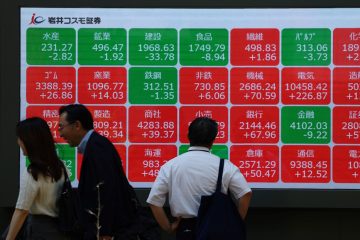5 Ways To Build A Core Portfolio In 2018

Professional investors utilize a wide variety of tactics and techniques to manage their portfolios. The specific strategies and methods are often as different and unique as each investor.
However, I have discovered a strategy that is nearly universal to winning stock market investors. This approach is what allows hedge funds, institutional investors, and almost every professional stock market trader to continually extract long-term profits from the volatile financial markets.
The strategy is known as “trading around a core position.” It combines the benefits of stock picking with the proven long-term effectiveness of buy and hold. Many investors understand stock picking, but they do not know how to build a long-term core position. The core position has to be cost-effective, diversified, and it needs to match your investment philosophy.
This article will explain exactly how to build core positions that match your investment temperament. I’ll also show you a simple way to design your portfolio like hedge fund managers and other professional stock investors.
First, here is how to trade around a core position. We are assuming a starting capital base of $ 100,000. Any amount can be used; the critical factor is an aproximate 50/50 allocation into core and stock picking capital allocations.
1. Split the $ 100,000 into two pools of $ 50,000
One pool will be allocated to stock picking and possibly active trading to capture the short-term gyrations of the market. The other $ 50,000 will be used to build a core position matching your investment philosophy.
2. Build a core position utilizing ETFs with $ 50,000
The ETF holdings will be considered your “core” position. Later I will show you precisely what ETFs to buy for the five investment temperaments.
3. Use the other $ 50,000 to pick stocks and actively trade
This 50% is used to trade the stocks that are on the move. You can go long or short, capturing profits regardless of the direction. You could also trade options or futures contracts, depending on your skill level, interests, and the market environment.
Benefits of utilizing a core position include reducing your portfolio’s overall volatility, lowering of costs as compared to a purely active stock trading portfolio, and the diversification of risk.
Now that we understand the basic idea behind a core position, just how should the core portfolio be constructed? Here is precisely how each investment temperament can be allocated into a core position utilizing three example ETFs.
1. Full Bull Temperament
If you are a hardcore stock market bull, this is an ideal core position. It is designed to grow capital via exposure to small caps and international stocks.
50% SPDR Portfolio Total Stock Market ETF (SPTM) (Market tracking)
40% SPDR Portfolio Developed World ex-US ETF (SPDW) (High growth)
10% SPDR Portfolio Aggregate Bond ETF (SPAB) (Reliable income)
2. Moderate Bullish Temperament
This is for those who wish to achieve capital growth via capital appreciation and minor income.
40% SPTM
40% SPDW
20% SPAB
3. Judicious Temperament
A core position designed for long-term capital growth combined with high current income.
30% SPTM
30% SPDW
40% SPAB
4. Somewhat Conservative Temperament
This core is for the safety-seeking, yet slightly adventurist investor.
20% SPTM
20% SPDW
60% SPAB
5. Conservative Temperament
This is for the risk adverse, income-seeking investor. It boasts an average weighted cost of about 3.9 basis points and is designed to generate current income, preserve capital and purchasing power.
10% SPTM
10% SPDW
80% SPAB
Risks To Consider: Designing a core portfolio built on your investment temperament helps mitigates some of the risk in the stock market. However, risk still exists in the financial markets regardless of your strategy. Anything can and does happen on a regular basis in the market. Always think long-term when investing in the stock market.
Action To Take: Build a core position utilizing the above-suggested ETFs by fitting your investment personality. This core position should consist of 50% of your stock market allocation. Set the other 50% aside to use for stock picking and different short- and long-term strategies.








